UPDATE 1/6/12 – This 93 ended up selling for $2,901 with 32 bids.
With the recent announcement of Saab’s tragic demise, we thought it was fitting to feature a car from the company’s heyday, back when they were still innovative… and profitable. Saab was still spelled SAAB and they built cars that were good at what they were meant to do. They may seem a little quirky today, but once you learn why they were the way they were, you will appreciate them as much as we do.
The curves may not be as beautiful as a Pininfarina penned design, but this body was created by aircraft engineers to be slippery smooth when gliding down the road. Many people still hold on to the fact that Saabs were influenced by airplanes, but it had more to do with the body than the cockpit. The aerodynamics of these early cars helped cut down drag and that was an important thing because there wasn’t a whole lot of power on tap.
If you look under the hood you will notice a tiny three cylinder engine peeking out up front. The engine was mounted in front of the axle and the transmission sat directly behind it. The radiator took up residence behind that. Seems sort of backwards, doesn’t it? Well, there was a reason for all of this. These cars were constructed in Sweden and in Sweden they get a lot of snow. By having the engine out front driving the front wheels this car was capable of handling slick roads much better then its rear wheel drive brethren.
The quirkiness doesn’t end there. The whole underside of the car acted like a big sled so it could glide right over snow drifts. The engine was a two stroke, so you never needed to change the oil. The transmission had a freewheel device to keep the engine from blowing up while improving fuel economy. The list goes on and on and that doesn’t even include the safety innovations.
Now that Saab has gone bankrupt, we can only hope that someone will swoop in and save what is left of the company. Hopefully they will be able to start fresh while looking to their rich past for inspiration. We have a feeling that if they build a car as innovative as this one was when new, that they would become a success in the future. If you prefer to stick with the past though, you could always pick up this 1960 Saab 93 project here on eBay. The seller claims it ran when parked in California and that there isn’t “much” rust. Bidding starts at $200 with what we hope is a realistic reserve.
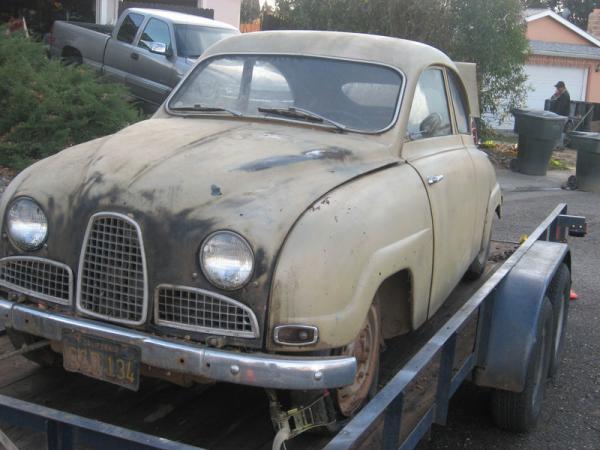
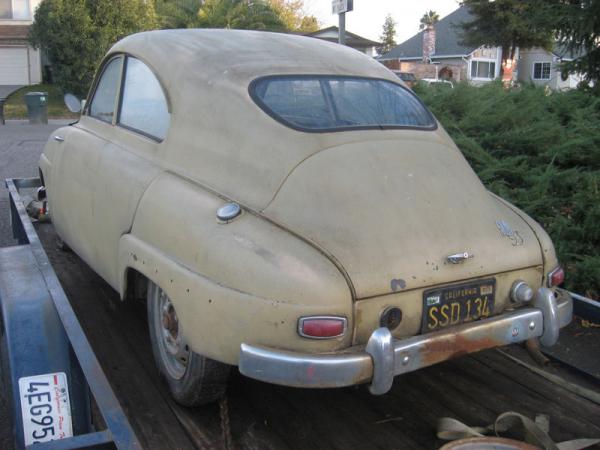
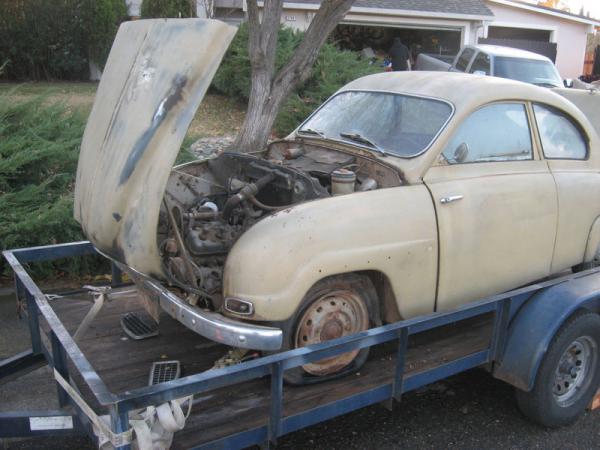
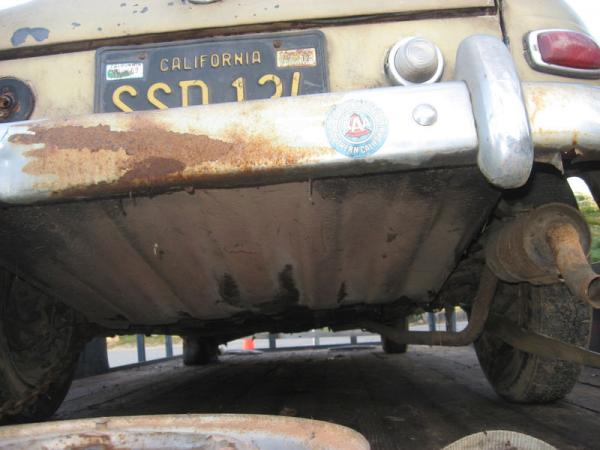
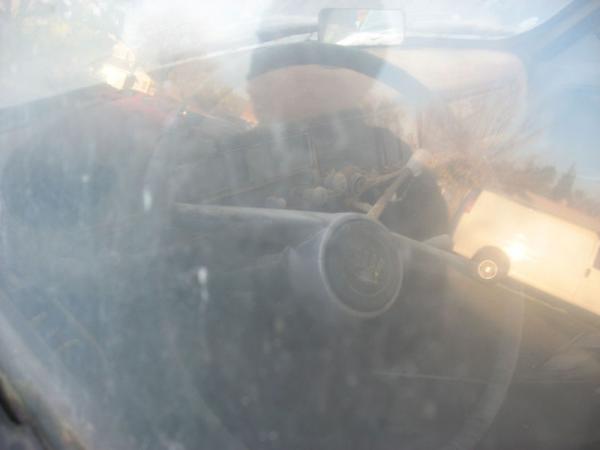


It’s not the purchase price that prevents one from acquiring this little gem, it’s the restoration.
These cars are a joy to work on, and finding the parts isn’t as bad as you might think, just involves some willingness to make connections in Europe, where these early SAABs were more plentiful than in the US.I’ve had Triumphs, MG’s, a Fiat, an Alfa and even a Lancia. Of all of them, working on the 1960 SAAB 93 was the most rewarding.These cars were designed for self-maintenance, so by design everything’s easy to get to. They were designed for a Nordic climate (think working on it with gloves) so there’s plenty of working space around everything.The steel is thick, and generally only rots in flat, square places. Mine was a pretty rusty example and I didn’t have to buy any body parts. Fabricated some patches for the floors and that was it. Flat and square, easy.The only challenge I had was that I cracked the windshield taking it out, and then rather than bring in a custom glass guy I held out until I could find an original. The person I moved the car to found one immediately because he knew where to look.These are GREAT cars . . . . I may go start working on the Missus to let me get “one more car” . . . I miss my 93.
This is a 93B, with suicide doors, which would make it a late 1950s car. For 1960, Saab changed to front hinged doors and called it the 93F. In early 1960 they began production of the 96 which was redesigned with a larger trunk.The 93s still had the 750cc engine. The 850cc engine was introduced with the 96. However, many owners upgraded their 93s to the 850 engine.I still have a SAAB 93F ice racer in my yard that I have been collecting parts for restoration.
In days of yore, car designs were reflective of the culture from which they came. The physical environment and weather conditions that are mentioned above are certainly proof of that, but I think it goes to even more fundamental design issues. Apparently this SAAB is of late ’50’s vintage, and the overwhelming design element seems to be pragmatism. By comparison, a late ’50’s American car speaks to confidence and glamor underpinned by an upwardly mobile affluence. Think 1959 Cadillac Eldorado convertible, for example.
I own a restored 58 93B. What a wonderful car to drive! It holds the road great and that 750cc engine is so smooth, just like an electric sewing machine at speed. Of course it’s slow as heck but once you get it up to speed it has no problem keeping it’s momentum, even on hills. Clearly these cars are very rare, so if you have the means to restore this car (we’re talking 300 hours or more of labor) I say go for it! You will not be dissapointed.Bruce TurkPres. Vintage Saab Club of North America http://www.vscna.org One more thing– I will personally help you locate the parts.The new owner should e-mail me at [email protected]
I second what Bruce said, and can vouch for his offer to help track parts down. He helped me a great deal with my 93F . . . I drive a SAAB 96 as one of my regular drivers. It has the V4 instead of the two stroke, but materially it’s the same as a 93. It’s a hoot to drive, keeps up with modern cars in traffic, and is utterly reliable. You have to get used to people asking “Is that a Beetle? What is it?!” But you’ll also meet a few people every year who say “Oh my gosh! I learned how to drive in a SAAB like that!” or “my grandfather had a SAAB like that!”For those of you who like more go-fast than the 2 stroke is likely to offer, champion SAAB rally driver Eric Carlsson was once asked “how do you get that tiny car with the tiny engine to go so fast?” His answer was “I just never step on de brakes” and it’s spot on. Your wife’s minivan will beat it off the line, but this chassis understeers gradually and predictably, so you can be pretty brave with how much speed you bring into a corner.Can’t recommend vintage SAABs highly enough, especially to someone considering their first restoration . . . . Great car to learn on . . . they’re rare and get more attention than a lot of more prestigious cars. But you don’t need a lot of specialist labor, and if you mess something up it’s not a travesty.Badly done seat seam in an Aston? Rough weld showing on a 356? Unforgivable. But this is a SAAB. It’s all about forgiving. :)
Not sure how we missed the suicide doors. Sorry folks, this is actually an older 93B as mentioned above. Thanks for catching that. Not sure why people don’t figure these things out before listing their car on eBay.
The small horizontal grilles are incorrect.
I like these, but I went to see it and this one has a LOT of issues. This guy also has a 95 Wagon that looks much better.